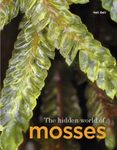Field / Identification Guide Identification Key
By: Karl B McKnight(Author), Joseph R Rohrer(Author), Kirsten McKnight Ward(Author), Warren J Perdrizet(Author)
392 pages, 400+ colour photos, 600+ b/w illustrations, 1 colour map
![Common Mosses of the Northeast and Appalachians Common Mosses of the Northeast and Appalachians]()
Click to have a closer look
About this book
Contents
Customer reviews
Biography
Related titles
About this book
This is the first book to help general readers recognize 200 common mosses of the Northeast and the Appalachian Mountains. With just this field guide, a hand lens, and a spray bottle – no microscopes necessary – readers will be able to identify and name many of the common species of mosses growing in the region's backyards, parks, forests, wetlands, and mountains.
At the heart of Common Mosses of the Northeast and Appalachians is an innovative, color-tabbed system that helps readers pick out small groups of similar species. Illustrated identification keys, colorful habitat and leaf photos, more than 600 detailed line drawings, and written descriptions help differentiate the species. This accessible book allows all nature enthusiasts to make accurate identifications and gain access to the enchanting world of mosses.
Contents
How to Use this Book 9
Key Features 10
Key Features Path to the Keys 16
How to Look at a Moss 18
Collecting Mosses 20
What Are Mosses? 22
Basic Structure of Mosses 25
Life History of Mosses 26
What Good Are Mosses? 28
Species Treatments
Acrocarps 33
Pleurocarps 173
Leafless 317
Peat Mosses 321
How to Use the Identification Keys 340
Keys 341
Habitat Lists 380
Moss Publications and Resources 384
Moss Names 385
Index 386
Customer Reviews
Biography
Karl B McKnight is associate professor of biology at St. Lawrence University. Joseph R. Rohrer is professor of biology at the University of Wisconsin-Eau Claire. Kirsten McKnight Ward is a third-generation botanist/field guide author and professional artist. Warren J. Perdrizet is a recent graduate of St. Lawrence University with a BS in biology.
Field / Identification Guide Identification Key
By: Karl B McKnight(Author), Joseph R Rohrer(Author), Kirsten McKnight Ward(Author), Warren J Perdrizet(Author)
392 pages, 400+ colour photos, 600+ b/w illustrations, 1 colour map
"With a 10× loupe and this book, an entire new world can be opened to even a seasoned naturalist."
– DRK, Wildlife Activist
"Since this is the first moss field guide for the eastern states covering most common species, it fills a need for those interested in these plants."
– Choice
"Full of clear diagrams, excellent photos, and evocative descriptions, this splendid guide shows readers what mosses are and how to study them. Vegetative and reproductive characteristics are presented so that different species can be readily compared, feature by feature. This remarkable, delightful book makes a great contribution to the understanding and appreciation of moss diversity, and to the conservation of mosses."
– Susan Moyle Studlar, West Virginia University
"This attractive and inviting guide will serve an important function in promoting the study of common mosses by nonspecialists. The interesting combination of drawings, field pictures, and dissecting microscope shots is effective, and the authors offer accurate, relevant, and scientifically solid information. A great addition to the botanical and natural history literature."
– Jon Shaw, Duke University


















































